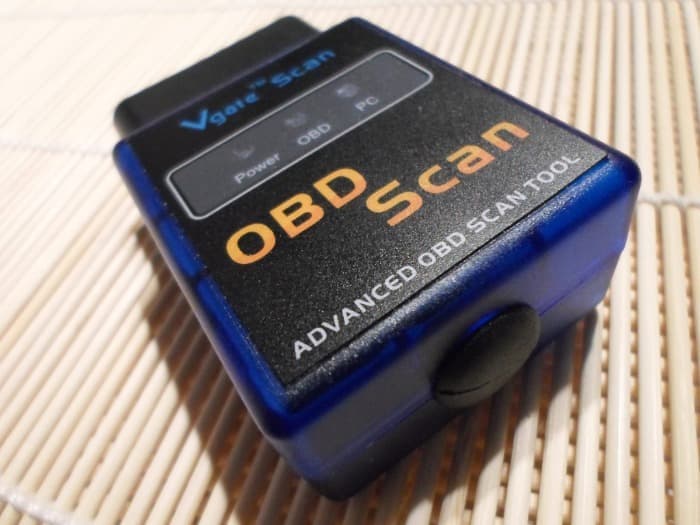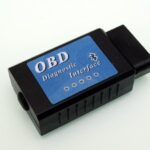Table of Contents
- Key Takeaways
- The Importance of Fuel Pressure in Vehicle Performance
- Common Symptoms of Fuel Pressure Issues
- Understanding the Role of an OBD2 Scanner in Fuel Pressure Diagnosis
- Step-By-Step Guide to Checking Fuel Pressure With an OBD2 Scanner
- Interpretation of Live Data Readings for Fuel System Components
- Tips for Maintaining Optimal Fuel Pressure in Your Vehicle
- Frequently Asked Questions
Home » Understanding Fuel Pressure and Checking With OBD2 Scanner
Many vehicle owners often overlook the importance of understanding fuel pressure and its impact on their vehicle’s performance. However, being knowledgeable about fuel pressure is crucial for maintaining optimal engine function.
Imagine a scenario where a car is experiencing reduced power and increased emissions. By using an OBD2 scanner, one can easily check the fuel pressure and diagnose any potential issues with the fuel system.
In this article, we will explore the significance of fuel pressure, common symptoms of fuel pressure problems, and provide a step-by-step guide on how to check fuel pressure using an OBD2 scanner.
Key Takeaways
- Fuel pressure is the force that pushes gasoline/diesel from the fuel tank to the engine.
- High fuel pressure can lead to poor fuel economy and increased emissions, while low fuel pressure can cause poor performance and engine damage.
- Modern vehicles have high-pressure fuel pumps (HPFP) that push fuel through the fuel lines to the injectors.
- Checking fuel pressure with an OBD2 scanner involves warming up the engine, connecting the scanner, checking for trouble codes, and performing live data reading to monitor fuel system components.
The Importance of Fuel Pressure in Vehicle Performance
Proper fuel pressure is crucial for optimal vehicle performance. High pressure can lead to poor fuel economy and emissions. Low pressure can cause performance issues and potential engine damage. Fuel pressure regulation is essential to maintain the right balance in the fuel system.
If the pressure is too high, the engine may consume excess fuel. This can result in reduced fuel efficiency and increased emissions. On the other hand, low fuel pressure can lead to inadequate fuel supply to the engine. This results in poor performance and potential damage.
It is important to ensure that the fuel pressure is within the specified range to avoid these consequences. Monitoring and addressing any imbalances in fuel pressure is vital for maintaining the overall performance and longevity of the vehicle’s engine.
Common Symptoms of Fuel Pressure Issues
Excessive fuel pressure can lead to decreased fuel efficiency, reduced power, and increased emissions in modern vehicles. Troubleshooting high fuel pressure is crucial to maintain optimal engine performance.
There are several common causes of low fuel pressure, including a faulty fuel pump, clogged fuel filter, or issues with the fuel pressure regulator. These issues can result in poor engine performance, hesitation, or even engine damage in severe cases.
On the other hand, troubleshooting high fuel pressure involves checking for symptoms such as a rich-running engine, poor fuel economy, and increased emissions. By using an OBD2 scanner, a 4-step process can be followed to check fuel pressure and diagnose any fuel system problems.
This process involves warming up the engine, connecting the scanner, checking for trouble codes, and performing live data reading.
Understanding the Role of an OBD2 Scanner in Fuel Pressure Diagnosis
An OBD2 scanner plays a crucial role in diagnosing fuel pressure issues by providing access to important data and trouble codes. Using an OBD2 scanner for fuel pressure diagnosis has its pros and cons.
One advantage is that it allows for easy and quick access to real-time data readings, such as fuel pump performance, injection readings, and fuel pressure sensor readings. This can help pinpoint the exact cause of fuel system problems.
Additionally, an OBD2 scanner can also retrieve trouble codes (DTCs) related to the fuel system, providing further insight into potential issues.
However, it’s important to note that an OBD2 scanner may not provide as precise or accurate fuel pressure readings as a dedicated fuel pressure gauge.
While an OBD2 scanner can give an indication of fuel pressure, a fuel pressure gauge provides a more direct and accurate measurement.
Therefore, a comparison of OBD2 scanners and fuel pressure gauges should be considered when diagnosing fuel system issues.
Step-By-Step Guide to Checking Fuel Pressure With an OBD2 Scanner
To check fuel pressure using an OBD2 scanner, follow these steps:
- Warm up the engine by attempting to start the car.
- Connect the OBD2 scanner or bidirectional scan tool to access fuel pressure data.
- Check for any OBD2 trouble codes (DTCs) to identify existing fuel system issues.
- Perform live data reading to monitor various fuel system components such as the fuel pump, injection readings, fuel pressure sensor, and rail pressure.
- This will help in diagnosing any issues with the fuel pressure.
- It is important to understand that different types of fuel pressure regulators can also affect fuel pressure.
Interpretation of Live Data Readings for Fuel System Components
The mechanic interprets the live data readings from the fuel system components to identify any potential issues. By analyzing the data provided by the OBD2 scanner, the mechanic can determine the impact of fuel pressure on engine efficiency.
Fuel pressure plays a crucial role in the proper functioning of the engine. If the pressure is too high, it can lead to poor fuel economy and increased emissions. On the other hand, if the pressure is too low, it can cause poor performance and even engine damage.
Troubleshooting fuel pressure problems using OBD2 scanner data allows the mechanic to monitor various components such as the fuel pump, injection readings, fuel pressure sensor, and rail pressure. This detailed analysis helps in diagnosing and addressing fuel system issues accurately and efficiently.
Tips for Maintaining Optimal Fuel Pressure in Your Vehicle
After understanding the interpretation of live data readings for fuel system components, it is important to know some tips for maintaining optimal fuel pressure in your vehicle. Proper fuel pressure maintenance techniques can help prevent engine problems and ensure efficient performance. Additionally, having fuel pressure troubleshooting techniques can aid in diagnosing and addressing any fuel system issues that may arise.
To provide a visual representation of these tips, a table is presented below:
| Fuel Pressure Maintenance Techniques | Fuel Pressure Troubleshooting Techniques |
|---|---|
| Regularly inspect and clean the fuel injectors to prevent clogging. | Use a fuel pressure gauge to measure the actual fuel pressure. |
| Replace the fuel filter at the recommended intervals to ensure proper fuel flow. | Check for any fuel leaks in the fuel lines or connections. |
| Keep the fuel tank at least half full to prevent fuel pump overheating. | Inspect the fuel pressure regulator for any signs of malfunction. |
| Use high-quality fuel to prevent the accumulation of deposits in the fuel system. | Perform a fuel pressure test to determine if the fuel pump is functioning correctly. |
| Follow the manufacturer’s recommended maintenance schedule for the fuel system. | Consult with a professional mechanic for further assistance with fuel pressure issues. |
Frequently Asked Questions
How Often Should I Check My Vehicle’s Fuel Pressure?
It is recommended to check a vehicle’s fuel pressure regularly, especially if signs of low fuel pressure are present. This can be done using an OBD2 scanner, following the steps to test fuel pressure accurately.
Can a Clogged Fuel Filter Affect Fuel Pressure?
A clogged fuel filter can affect fuel pressure by restricting the flow of fuel to the engine. This can lead to low fuel pressure and poor engine performance. Additionally, a malfunctioning fuel pressure regulator can also cause fuel pressure problems.
What Are the Potential Causes of High Fuel Pressure?
Potential causes of high fuel pressure include a faulty fuel pressure regulator, a clogged fuel return line, or a malfunctioning fuel pump. Symptoms of fuel pressure issues may include poor fuel economy, increased emissions, and reduced engine performance.
Is It Possible to Check Fuel Pressure Without an OBD2 Scanner?
Yes, it is possible to check fuel pressure manually without an OBD2 scanner. Signs of low fuel pressure include poor engine performance, hesitation, and potential engine damage in severe cases.
How Can I Prevent Fuel Pressure Issues in My Vehicle?
To prevent fuel pressure issues, proper maintenance is key. Regularly inspect and replace fuel filters, ensure the fuel pump is functioning correctly, and monitor fuel system components. This helps maintain optimal fuel pressure and prevent engine problems.



